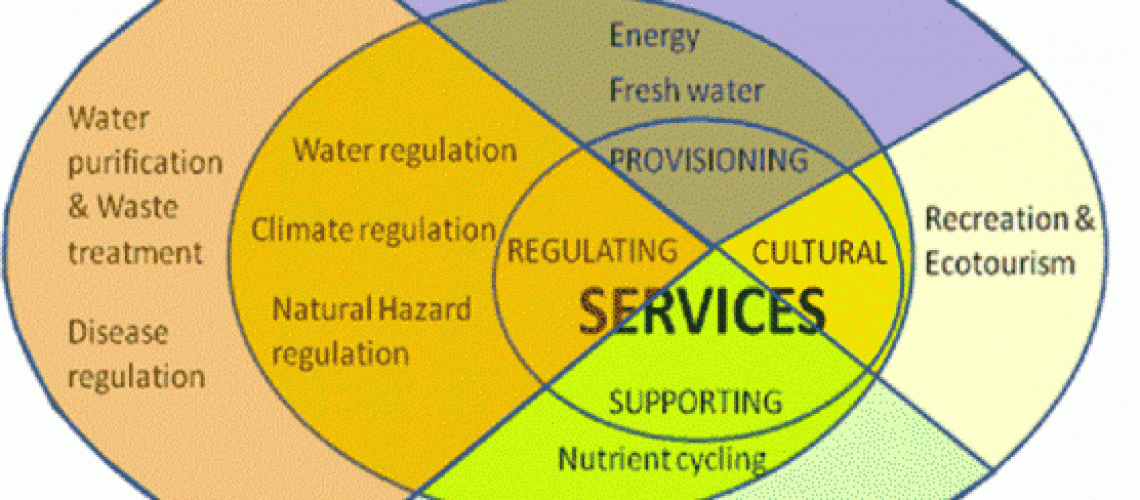Earlier this month, Jim Pittman, Director of Sustainability at Prescott College, led the Watershed Improvement Council in a discussion about ecosystem services in the Upper Granite Creek Watershed. Ecosystem services is a term that may be unfamiliar, but describes something we all know: that properly functioning natural ecosystems provide a host of ammenities, both tangible and intangible. These services are so basic that we often overlook them, let alone account for them in decisions about land use and management that may impact ecosystems. Intact ecosystems provide us with clean air, local climate regulation, a source of fresh water, water filtration, flood regulation, regulation of soil erosion and fertility, habitats for species, etc.
While ecosystem services are so fundamental that they are often overlooked, we take notice when these services have been damaged, oftentimes resulting in increased flooding and water pollution, declines in streamflows and groundwater supplies, and increased incidence of invasive species to name a few. In response, we invest billions of dollars in built capital – grey infrastructure, flood control measures, wastewater treatment plant upgrades, soil fertilizers, and technology – to provide for us what natural ecosystems used to provide to us free-of-charge.
A new twist on watershed management is to focus on protecting and restoring ecosystem services and identify local funding mechanisms to accomplish those tasks by analyzing the flows of services – who provides them, who benefits, and where impacts to service flows occur. Ecological economics, an emerging field of study, has been developing methods of estimating the dollar value of these services, called ecosystem valuation. Ecosystem valuation allows for more comprehensive cost-benefit analyses and accounting of how we conduct business by including the benefits provided by ecosystems and the cost of mimicking those services with built capital when they are damaged or lost.
A few noteworthy examples of how ecosystem valuation has contributed to the protection and restoration of the environment:
1. In 1997, New York City launched a revolutionary project to protect its drinking water by protecting ecosystem services of its watershed. New York City’s water system provides about 1.5 billion tons of drinking water to almost nine million New Yorkers every day. Ninety percent of the water is drawn from the Catskill/Delaware watershed, which extends 125 miles north and west of the city. Presented with a choice between provision of clean water through building a filtration plant or managing the watershed, New York City easily concluded that the latter was more cost effective. It was estimated that a filtration plant would cost between $6 billion and $8 billion to build. By contrast, watershed protection efforts, which would include not only the acquisition of critical watershed lands but also a variety of other programs designed to reduce contamination sources in the watershed by working with rural farms, would cost only about $1.5 billion. Acting on behalf of the beneficiaries of the Catskills’ water purification services, New York City chose to invest in natural rather than built capital. New York City is not alone. Numerous municipalities around the US use watershed conservation as a means of ensuring high drinking water quality.
2. In the Costa Rican community of Heredia, the local private water utility collects an environmental fee from water users on their water bill to invest in watershed protection, mainly through direct payments to upstream landowners. Funds are used for forest protection, reforestion of underused land or land currently used for livestock grazing, slope recovery, and an emergency fund for natural disasters – investments in natural ecosystems that provide water supplies. This program has been ongoing since 2000.
The WIC plans to used the concept of ecosystem services to better understand where efforts can be targeted for greatest benefit to water quality and overall watershed health and identify local financing mechanisms to protect and restore our watershed. Look for this in the revised WIP, to be released late 2012!

